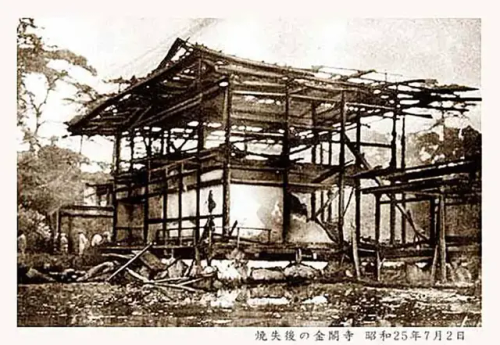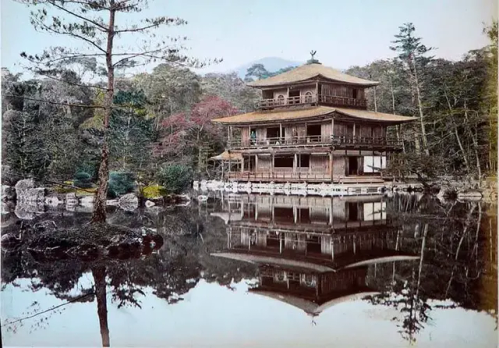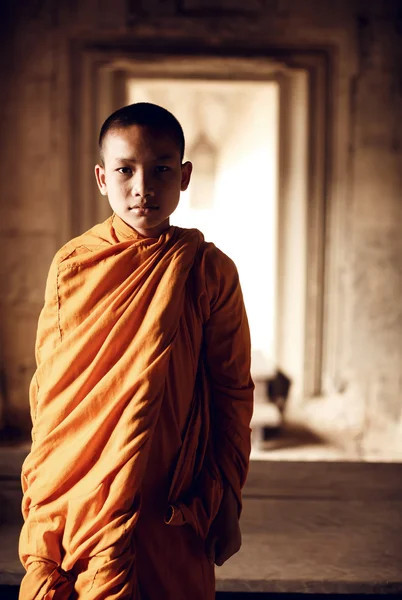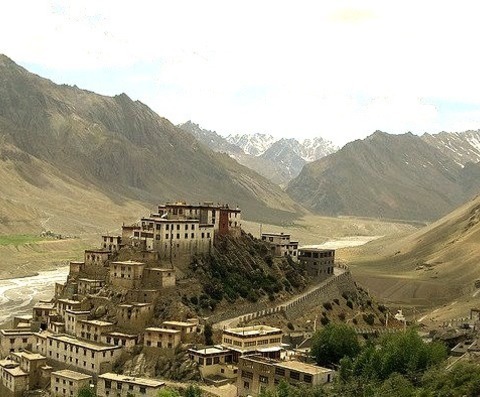Your Curated Tumblr Experience Awaits!
Buddhism - Blog Posts
Temple on Kinkazan island, not far from Sendai in Tohoku, Japan








Sean bienvenidos, japonistasarqueologos, a una nueva entrega, cultural-artística vamos a hablar sobre Kinkaku-ji una vez dicho esto pónganse cómodos que empezamos. - El kinkaku-ji se localiza en la ciudad de Kyoto, en la prefectura de kansai. Kyoto fue una de las dos grandes capitales del Japón feudal porque su otra ciudad de gran peso fue Nara, pero eso es otra historia. - El Kinkaku-ji, fue construido en el siglo XIV, el que se ve actualmente es una reconstrucción porque el original se destruyó en un incendio en 1950 y el actual data de 1980 aproximadamente ya en 1880 perdió su revestimiento de pan de oro, fue La residencia de Ashikaga yoshimitsu tras su muerte lo donó a la orden religiosa y pasó a ser un templo budista. - Espero que os guste y nos vemos en próximas publicaciones. Fuentes de foto: https://blogukiyoe.es/kinkaku-ji-en-el-ukiyo-e wikipedia - Welcome, Japanese archaeologists, to a new cultural-artistic installment, we are going to talk about Kinkaku-ji. Once that has been said, make yourself comfortable and we will begin. - Kinkaku-ji is located in the city of Kyoto, kansai prefecture. Kyoto was one of the two great capitals of feudal Japan because its other major city was Nara, but that is another story. - The Kinkaku-ji was built in the 14th century, the one currently seen is a reconstruction because the original was destroyed in a fire in 1950 and the current one dates from approximately 1980 and in 1880 it lost its gold leaf coating, it was La residence of Ashikaga Yoshimitsu after his death he donated it to the religious order and it became a Buddhist temple. - I hope you like it and see you in future posts. Photo sources: https://blogukiyoe.es/kinkaku-ji-en-el-ukiyo-e Wikipedia - 日本の考古学者の皆さん、新しい文化芸術の回へようこそ。金閣寺についてお話します。それが終わったら、落ち着いてから始めましょう。 - 金閣寺は関西県京都市にあります。京都は、もう一つの主要都市が奈良であったため、封建時代の日本の二大首都の一つでしたが、それはまた別の話です。 - 金閣寺は 14 世紀に建てられ、現在見られるものは再建されたものです。オリジナルは 1950 年の火災で焼失し、現在のものは 1980 年頃のもので、1880 年に金箔のコーティングが失われ、ラ邸でした。足利義満の死後、教団に寄進され仏教寺院となった。 - 気に入っていただければ幸いです。今後の投稿でお会いしましょう。 写真出典: https://blogukiyoe.es/kinkaku-ji-en-el-ukiyo-e ウィキペディア







Sean bienvenidos japonesitasarqueológicos a una nueva entrega, en esta ocasión tenemos la colaboración de la cuenta @historia.belica.mundial, en la que hablaremos de la empresa más antigua del mundo ¿ Donde se localiza? dicho esto pónganse cómodos que empezamos. - Kongo Gumi tiene un grupo de artesanos llamado "Takumikai" formado por carpinteros de santuarios dedicados. El Kongo Gumi ha transmitido las técnicas que se han transmitido de discípulo a discípulo durante más de 1.400 años y para transmitirlas a la próxima generación. Son el principal grupo de carpinteros que hacen los templos y santuarios de todo Japón, utilizando técnicas tradicionales y avanzadas, como juntas y juntas de madera. - ¿Cuándo se estableció la empresa? Se estableció en el Séptimo año del trigésimo emperador Bidatsu del período Asuka 578 d. C fueron responsables de la construcción del Templo Shitennoji y el Templo Horyuji. Ahora el Templo Horyuji ha sido catalogado como Patrimonio de la Humanidad. En Japón, hay 7 "empresas del milenio" como King Konggumi, y hay más de 130,000 "empresas de longevidad" con más de 200 años, ocupando el primer lugar en el mundo. - Finalmente, en 2006, anunció su liquidación. Los activos fueron absorbidos por la empresa subsidiaria del mismo nombre "Kongo-gumi" establecida por Takamatsu Construction en noviembre de 2005, y Kongo-gumi volvió a su antiguo negocio, especializado en arquitectura de templos. Antes de la liquidación, los ingresos del año fiscal 2005 de King Kong Group fueron de 7.500 millones de yenes, con 100 empleados. - Espero que os haya gustado y nos vemos en próximas publicaciones de japón ¿Conocían esta empresa? - Welcome Japanese archaeologists to a new delivery, this time we have the collaboration of the account @historia.belica.mundial, in which we will talk about the oldest company in the world. - Kongo Gumi has a group of craftsmen called "Takumikai" made up of dedicated shrine carpenters. The Kongo Gumi has passed down the techniques that have been handed down from disciple to disciple for over 1,400 years and to pass them on to the next generation. They are the main group of carpenters who make temples and shrines all over Japan, using traditional and advanced techniques, such as wooden joints and joints. - When was the company established? Established in the 7th year of the 30th year of Emperor Bidatsu of the Asuka period 578 AD, they were responsible for the construction of Shitennoji Temple and Horyuji Temple. Now Horyuji Temple has been listed as a World Heritage Site. In Japan, there are 7 "millennium companies" such as King Konggumi, and there are more than 130,000 "longevity companies" with more than 200 years, ranking first in the world. - Finally, in 2006, it announced its liquidation. The assets were absorbed by the eponymous subsidiary company "Kongo-gumi" established by Takamatsu Construction in November 2005, and Kongo-gumi returned to its former business, specialising in temple architecture. Prior to the liquidation, King Kong Group's 2005 fiscal year revenues were 7.5 billion yen, with 100 employees. - I hope you liked it and see you in future posts from Japan. Did you know this company? - 日本の考古学者を迎えての新しい配信、今回は@historia.belica.mundialというアカウントの協力で、世界で最も古い会社についてお話します。 - 金剛組には「匠会」と呼ばれる、こだわりの宮大工の職人集団があります。金剛組は、1400年以上にわたって弟子から弟子へと受け継がれてきた技術を、次の世代に伝えるために継承しています。 日本各地の寺社仏閣を、木組みや継ぎ手など伝統的な技術と高度な技術を駆使して作る大工の中心集団である。 - 会社が設立されたのはいつですか?飛鳥時代の578年、美達天皇30年7月に設立され、四天王寺、法隆寺の建立を担った。現在、法隆寺は世界遺産に登録されている。日本には金剛組など7つの「千年企業」があり、200年以上の「長寿企業」は13万社以上あり、世界第1位である。 - そして、2006年、ついに清算を発表した。2005年11月に高松建設が設立した子会社「金剛組」に吸収され、金剛組は寺院建築に特化した旧来の事業へと回帰した。清算前のキングコンググループの2005年度の売上高は75億円、従業員数は100名でした。 - この会社は知っていましたか?

Sean bienvenidos a un nuevo apartado de la cuenta jainistasarqueólogos, para estrenarlo vamos a hacer un reel a modo debate si os parece bien dicho esto pongan cómodos que empezamos. - ¿Por qué hay esvásticas o cruces gamadas en Japón, india, etc.? Me gustaría aclarar que esta publicación no busca incitar la motivación u odio hacia dicho símbolo, voy a explicaros un poco el verdadero del símbolo y de cómo fue utilizado para el mal. La cruz gamada se usa en muchas culturas del mundo desde el neolítico para adorar al sol, además significa buena fortuna o bienestar, es muy usada por el hinduismo, los antiguos griegos, etruscos y de cómo un simple símbolo dependiendo de cómo se enfoque puede cambiar bruscamente de bueno a malo o a la inversa. - ¿Qué opinan ustedes? Leo gustosamente los comentarios, por favor es un debate, se intenta no buscar idolatrías, yo me mantengo neutro. - Espero que os guste y nos vemos en próximas publicaciones, que pasen una buena semana. - Welcome to a new section of the Jainistasarqueólogos account, to release it we are going to do a reel in debate mode if you think this is well said, make us comfortable that we start. - Why are there swastikas or swastikas in Japan, India, etc.? I would like to clarify that this publication does not seek to incite motivation or hatred towards said symbol, I am going to explain a little about the true symbol and how it was used for evil. The swastika is used in many cultures of the world since the Neolithic to worship the sun, it also means good fortune or well-being, it is widely used by Hinduism, the ancient Greeks, Etruscans and how a simple symbol depending on how it is focused can change abruptly from good to bad or vice versa. - What do you think? I read the comments with pleasure, please, it's a debate, we try not to look for idolatry, I remain neutral. - I hope you like it and see you in future publications, have a good week. - アカウントの新しいセクションへようこそ、それを開くために、我々はあなたがそれが良いと思う場合は、議論としてリールを作るつもりですので、自分自身を快適にし、始めましょう。 - なぜ日本やインドなどに鉤十字や卍があるのでしょうか?この投稿は、シンボルに対する動機や憎悪を煽るためのものではないことを明確にしておきたい。実際のシンボルと、それがどのように悪のために使われたのかについて少し説明しよう。卍は新石器時代から世界中の多くの文化で太陽を崇拝するために使われており、幸運や幸福を意味するものでもある。ヒンドゥー教、古代ギリシャ、エトルリアなどで広く使われており、単純なシンボルがアプローチの仕方によって、善から悪へ、あるいはその逆へと突然変化するものなのだ。 - どう思いますか?私は中立を保ちますので、偶像崇拝を探さないでください。 - それではまた、良い1週間を。





Mausoleo Nikko Tosho-gu, construido en el siglo XVII por Iemitsu, sucesor de Tokugawa Ieyasu. Es un lugar compuesto por un horror vacui, horror al vacío, consta con un gran bestiario de animales con un alto lujo de detalles, es un lugar donde se ve, el máximo esplendor del arte tradicional japonés budista y sintoísta en una gran armonía. - Nikko Tosho-gu Mausoleum, built in the 17th century by Iemitsu, successor of Tokugawa Ieyasu. It is a place composed of a horror vacui, horror of emptiness, it consists of a large bestiary of animals with great detail, it is a place where you can see the maximum splendor of traditional Japanese Buddhist and Shinto art in great harmony. - 17世紀、徳川家康の後継者である家光によって建てられた日光東照宮。ホラーヴァクイ、空虚の恐怖で構成された場所であり、細部まで描き込まれた動物の大型獣戯画で構成され、日本の伝統的な仏教美術と神道美術が見事に調和した最大の素晴らしさを見ることができる場所である。 -

Red Spider Lily
These flowers are originally found in China, Japan, Korea, and Nepal and spread to the United States and other countries overtime. They bloom in the late summer or early autumn often in response to heavy rainfall. They’re blooming patterns and cultural significances give them other names like the Hurricane Lily or the Resurrection Lily. This flower, along with all of the members in genus Lycoris are poisonous due to the presence of the toxic alkaline Lycoris, if ingested bulbs can cause diarrhea, vomiting, convulsions, and in severe cases, even death.
This flower symbolizes the coming of fall. Red spider lilies are frequently seen in Japan, growing along roadways and along the perimeter of Rice fields and houses. The lilies are purposely planted near rice fields in order to deter mice and other animals from invading the rice patties.
In ccordance with established tradition many practitioners of Buddhism in Japan will celebrate the arrival of fall with a ceremony at the tombs of their ancestor in order to pay tribute to the dead spider lilies are commonly planted on and around grave sites as part of a ceremonial practice.
Some legends have it that if you see someone who you may never meet again, these flowers will bloom along the paths you take. Which is often used media to represent death or becoming of bad times. 
there is no permanent state of self. this idea has been around for thousands of years, it's one of the fundamental philosophies in Buddhism. but that doesn't mean there is no identity. on the contrary, it means who you are at this very point in space in time IS your identity, even if you've never been that person before and you never will again. Who you are in this moment in time is just as much a part of your identity as any other, even if it's only here for a short while. all that to say, it's not a phase mom
Welp…
Dark!Buddha: get attached to everything. develop attachments to whatever you see that are so profound you go insane
Religions In Indonesia

.·:*˚¨¨ ≈★≈ ¨¨˚*:·.
Indonesia is quite an interesting country! It is known for one of their islands; Bali, and their vast number of languages. Fun fact! Indonesia is the country with the most islands and probably the country with the most languages that belong to them. There are a lot of islands, a lot of cultures that reside with the islands in the country, like Javanese and Balinese. But there is one language that is used by everyone there is Bahasa Indonesia. Their capital is Jakarta which isn’t as known as Bali but is still the capital of Indonesia.
Another thing that Indonesia is known for is their religions! It’s actually not permitted to NOT have a religion and that you must pick a religion out of 6 religions: Hindu, Kong Fu Cu, Islam, Buddha, Christian, and Catholic. Afterall, Indonesia is a secular democratic country that has a Muslim-majority population. The Indonesian constitution guarantees all people in Indonesia the freedom of worship, each according to his or her own religion or belief. It also stipulates that the state shall be based upon the belief in "the one and only God" (a condition which also forms the first principle of the Pancasila, the Indonesian state philosophy introduced by Soekarno in 1945).
Indonesia is always open to thousands of things! But there are some things that aren’t allowed and aren’t legalized by its government. Not only that, but religions in Indonesia have conflict despite having a lot of religious freedom. And although some religions are fighting over doctrinal differences, most conflict stems from more secular causes- a desire for political power, a struggle for resources, ethnic rivalries, and economic competition.
Just like I said earlier, some religions are having conflict. And although some religions are fighting over doctrinal differences, most conflict stems from more secular causes- a desire for political power, a struggle for resources, ethnic rivalries, and economic competition. Their reasoning for this conflict had caused a lot of problems in Indonesia.
Here’s a few of the conflicts that have been going on in Indonesia:
The conflict in the Malaccas, where, according to Indonesian Red Cross data, over 500,000 people have been displaced and over 4,000 people have died in Christian-Muslim combat over the previous two years. Even if it is undoubtedly the greatest of the problems we are currently experiencing, it would be inaccurate to attribute it to a long-standing religious disagreement. The underlying causes of it are actually numerous historical, political, and economic ones.
Although West Kalimantan is currently quiescent, hundreds of people were murdered in a new outbreak that occurred in 1999. Furthermore, there was a prior incident in 1997 that resulted in numerous fatalities and involved native Dayaks and some native Malays fighting the Madurese immigrant group. The topic of migrants against indigenous people is a recurring motif in conflicts within Indonesian communities.
There is a conflict going on in Poso in Sulawesi. Again the worst episode was this past spring when there were about 300 people killed. Again there was Christian-Muslim fighting but this conflict was based more on local elites struggling over power that ended up in communal conflict.
Community conflicts occasionally break out in Couchon Pandang in West and East Java, Kupang in West Timor, Lombok in Eastern Bali, and other places where the conditions are right. Of course, the ethnic Chinese are also a constant target whenever societal turmoil occurs.
Of course, there is a way to resolve all of these problems. It won’t be easy, neither will it be quick to resolve. But with time, it can be done. There are few solutions that I know of to overcome religious conflict and receive religious harmony:
Followers of different religions should exercise moderation and tolerance towards each other and their beliefs, and not instigate religious enmity or hatred.
Religion and politics should be kept separate.
Overall, we should learn how to tolerate and respect other religions. Considering they are all in the same country, with Bhineka Tunggal Ika has their meaning for unity in all religions. I do hope for the best outcome of any religious conflict in Indonesia. The people and its scenery is truly a beauty.
.·:*˚¨¨ ≈★≈ ¨¨˚*:·.
Here's the resources that I used!
Indonesia Investments (2019). Religion in Indonesia | Indonesia Investments. [online] Indonesia-investments.com. Available at: https://www.indonesia-investments.com/culture/religion/item69.
Jones, S. (2023). Causes of Conflict in Indonesia. [online] Asia Society. Available at: https://asiasociety.org/causes-conflict-indonesia.
opentext.wsu.edu. (n.d.). 6.4 RELIGIOUS CONFLICT – Introduction to Human Geography. [online] Available at: https://opentext.wsu.edu/introtohumangeography/chapter/6-4-religious-conflict/#:~:text=Although%20some%20religions%20are%20fighting.
Ministry of Home Affairs (2023). Maintaining Racial and Religious Harmony. [online] Ministry of Home Affairs. Available at: https://www.mha.gov.sg/what-we-do/managing-security-threats/maintaining-racial-and-religious-harmony.

We are shaped by our thoughts, we become what we think. When the mind is pure, joy follows like a shadow that never leaves. Buddha Purnima💐🙏 . . . . . . . . #buddha #buddhism #buddhatattoo #buddhaart #buddhismisalifestyle #buddhaquotes #tibetanbuddhism https://www.instagram.com/p/B_3GRZ6D_1Y/?igshid=kpat0ba2zc5u
He has not lived in vain who dies the day he is told of the true path. - 朝聞道, 夕死可矣. - Triêu văn đạo, tịch tử khả hỉ.
When you know illusion, you will immediately be free. Freedom from illusion is in itself enlightenment. - Tri huyễn tức ly. Ly huyễn tức giác.
Phật, Kinh Viên Giác (Buddha, The Sutra of Perfect Enlightenment)
Biết nó là giả (huyễn) bèn ly cái khổ. Ly được cái huyễn tức là người giác ngộ.
In Zen circles, people say: "Before I became a practitioner, I saw mountain as mountains and rivers as rivers. When I began to practice, I no longer saw mountain as mountains and rivers as rivers; I began to see their interbeing nature. After I atttained the Path, I again saw mountain as mountains and rivers as rivers, but now my view is clearer, my understanding is brighter. I'm no longer caught in the view that the mountain is only the mountain and the river is only the river. Now I really see them, I see their true nature."
Thich Nhat Hanh, Zen Battles: Modern Commentary on the Teachings of Master Linji
A Zen Master said: "Before practicing Zen, rivers were rivers and mountains were mountains. When I practiced Zen, I saw that rivers were no longer rivers and mountains no longer mountains. Now I see that rivers are again rivers and mountains are again mountains."
Thich Nhat Hanh, Zen Keys

Body artist paints a circle of life on her face, by Emma Allen. This is pretty much one of the core beliefs in Buddhism.
One fundamental belief of Buddhism is often referred to as reincarnation - the concept that people are reborn after dying. In fact, most individuals go through many cycles of birth, living, death and rebirth. A practicing Buddhist differentiates between the concepts of rebirth and reincarnation. In reincarnation, the individual may recur repeatedly. In rebirth, a person does not necessarily return to Earth as the same entity ever again. He compares it to a leaf growing on a tree. When the withering leaf falls off, a new leaf will eventually replace it. It is similar to the old leaf, but it is not identical to the original leaf.
After many such cycles, if a person releases their attachment to desire and the self, they can attain Nirvana. This is a state of liberation and freedom from suffering.
Source.

SPRING VIBES 🙏🏻 Everything is in you ✨ We have to be braves, defeat what made us weaks, we must shine between the darkness let our spirit speak from us. We are love, we must show compassion and kindness 💚💕 - - - #spiritual #spirits #freedom#freespirit #freemind #freeminds #healthymind #healthylife #healing #kindness #beautiful#meditation #meditate #buddhism #middleway #buddhist
Be the change that you wish to see in the world. Mahatma Gandhi
Main Beliefs Chart
Chart of Main Beliefs
High Power - There is no high power in buddhism because they dont believe in a god, but they believe in things that the Buddha teaches or studys . Those things are called the , Dharma and Sangha.Since Budda was a teacher Dharma was the things he taught were called Dharma. The Sangha being the students that the Buddha taught who are mostly monks , nuns that dedicated all there energy of there life’s to conserve the teaching and available to use in the future.
Rules and goals-
Worship And ritual-
Spirit And After Life -the Buddhism would believe that the spirits mean when a person will die and become ghost. Then the afterlife would mean that a person would die and it will depend on there lifestyle that whether they will come back to life as a good animal or a bad animal for example if you had a bad lifestyle you will come out to be a rat or if your lifestyle was good probably turn out to be a beautiful bird or something.
Religious Hierarchy - Buddhism doesn’t really have a caste system or a class system unlike Hinduism . They have these kind of people that people follow or try to be like. They don’t have a organize group of people like a type of government. They are important figures in Buddhism and they are the Monks , for men , and for women called Nuns and then of course the Buddha .

Thegchog Namdrol Shedrub Dargyeling, also known as Namdroling monestary was a temple constructed from bamboo, covering an area of approximately 80 square feet in a jungle where the indian government granted land for the tibetian exiles, initial challenges included rampaging elephants and other tropical dangers. Now its one of the largest teaching centers for nyingma lineage of tibetian buddhism in the world.. #buddhism #buddha #nyingma #namdroling #tibetan #monks #religions #architecture #spiritual #focus #nirvana #lifestyle #cultures #traditions #rituals #outlooktraveller #trav3lr #instagram #instadaily #rider #dairies #explore #karnataka (at Bylakuppa, Karnatka)

Namdroling monestary.. Established in 1969 by Penore rinpoche now its one of the worlds largest teaching centers for tibetian buddhism. #roadtrips #riders #buddhism #budha #teaching #mudra #buddisttemple #monastery #outlooktraveller #life #religion #tradition #tibet #tibetian #culture #explore #karnataka (at Bylakuppa, Karnatka)

- The Last Journey of Buddha -
“O Bhikkhus. And if the practitioners [1] cultivate the thought that all things are impermanent in the future world, [2] and if you cultivates the thought that all things are not the self (Atman), [3] and if you cultivate the thought that all things are impure, [4] and if you cultivate the thought that all things are troublesome, [5] and if you cultivate the thought of renouncing all things, [6] and if you cultivate thoughts that depart from all earthly desires, [7] and if the thought of cessation is practised, then prosperity is expected of the practitioners during that time, and there will be no decline.”
Buddha (Nirvana Sutra, Chapter 1, At Vulture's Peak: 10)

I invite you to read!


I wish I knew something more, felt more.Something I could put my hands on and turn it into celestial sparks. I won't lie, life is not a sane man's business. You can gaze at a lovely meadow and sink into a meditative absurdity. Or you can feel trampled down by the sky above.
Her Schrödinger's Cat, Eight Insight




